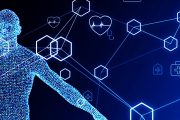In July The New American reported an announcement posted on the Defense Advanced Research Projects Agency (DARPA) website seeking “trailblazers” willing to “take the road less traveled” and “participate in a short-fuse, crucible-style environment to invent new approaches to the identification of people, places, things and activities from still or moving defense and open-source imagery.”
On September 28, the super-secret research and development arm of the Pentagon reported some of the early “innovative” ideas being kicked around by the six teams chosen to live and labor in the “DARPA Innovation House.” The disclosures, although brief, are very frightening and portend the rapid growth of a powerful federal government able to keep citizens under its watchful eye wherever they go.
Before the big reveal, DARPA program manager Mike Geertsen laid out the program’s purpose and procedures:
This experiment allows thinkers from diverse fields to zero in on focused area of research for eight weeks. We are examining how collaboration among different disciplines can yield game-changing technologies. For instance, our participants include computer engineers, data architects and imagery analysts. We have thrown them in with a robotics expert from NASA, visual artists and neuroscientists. If this model proves to be successful, it represents a new means of tackling some of the hard problems in government-sponsored research.
Geertsen then provided brief descriptions of six proposals made by the participants. Those with a background in relevant areas of science are encouraged to click on the hyperlinked titles of the proposals to read more thorough reports on the development of these technologies. Those without such training, however, will benefit from even a cursory reading of these papers.
For example, on the website discussing the visualization of video information, the authors of the article highlighted “a stream-based technique for processing and directly rendering video data in real time. With the aid of several examples, we demonstrate the effectiveness of using video visualization to convey meaningful information contained in video sequences.”
The videos to be analyzed, the article says, are obtained from “security and traffic cameras, video conferencing systems, video emails” among other sources. Such collection and analysis seem to potentially violate the Fourth Amendment’s restriction against “unreasonable searches and seizures.”
And, in the article on geospatial-oriented structure extraction, “public safety” and “international justice” are promoted as the reasons for the research.
The technologies being developed include:
Petavision
Multi-Modal Approaches to Real-Time Video Analysis
Biologically-inspired, hierarchical neural networks to detect objects of interest in streaming video by combining texture/color, shape and motion/depth cues.
GOSE (Geospatial-Oriented Structure Extraction)
Structure Extraction from Imagery
Automatic construction of a 3D wireframe of an object using as few images as possible from a variety of angles.
Videovor
Visualization of Video Information
Software that fragments and re-models linear time of video content to cluster big pools of related data in a 3D interactive interface for human analysis.
Hybridcv
Inferring Objects in Photos and Video
A system that allows the user to infer the location and structure of hidden object parts from photos and videos as well as provide categorization and recognition via an associative memory framework.
Looking Glass
Focused Sensor Fusion
A new integrated working environment for analysts that presents relevant data from a large variety of geospatial data and sensors, including ground-level video, LiDAR, wide-area airborne full motion video, and unstructured data.
IVASIA
Visualization for Image Analysis
A lightweight virtual world in 3D perspective that would follow the work that an image analyst is performing.
Taking a closer look at the descriptions of the goods being cooked up in the DARPA test kitchen gives a glimpse into the near future, where government agents (or those in local law enforcement attached to them) are able to scan the brainwaves of people in a crowd and detect the presence of a potential threat to homeland security.
Once identified, the target can then be followed anywhere on the globe using an interconnected web of cameras and other recording devices that upload real-time images to an end user.
Within this complex of dormitories and labs near the campus of George Mason University, the embryos of powerful virtual soldiers in the service of the surveillance state are being incubated.
In order to assist these teams of surveillance software wunderkind in their mission to create a more robust recognition application, “DARPA will provide access to unclassified data sets and facilitate interaction with mentors from U.S. Government and academia.”
These interactions will “provide teams with context for how their proposed technology could be used by the warfighter or analyst,” making it clear that these technologies are not just for use in the waging of war against a foreign foe, but may also be deployed domestically to help target and track those labeled by the government as potential enemies of the state.
Toward that eery end, teams are given access “to mentors and visitors from academia and multiple U.S. Government agencies, including both military and intelligence communities’ specialists.”
Not surprisingly, DARPA refuses to identify these prospective mentors and visitors. Savvy readers can draw their own conclusions as to who might be interested in overseeing such a special project.
Those vying for the DARPA contract will meet five days per week in an undisclosed “workspace” in Arlington, Virginia. The project lasts for eight weeks, and while it lasts, the developers will be put up in housing provided by George Mason University somewhere in the Arlington area.
And, just in case there’s some highly motivated team of college geospatial analysis whiz kids who worry that they just don’t have what it takes to compete against other equally ambitious squads of college engineers, DARPA has some words of encouragement:
This effort does not represent a competition between teams. Every team that demonstrates sufficient progress in the first session will continue into the second session. There is no limit to the capabilities that are needed in understanding large-scale imagery and video data, so all teams can be equally successful.
There’s room for everybody who’s willing to help the government explore all the limitless capabilities of analyzing “large scale imagery and video data.” So, anxious but reluctant colleges shouldn’t be intimidated by a little healthy competition. The government can use all the help it can get.
Finally, DARPA hints at the variety of media on which the various applications produced by the participating teams could be used:
Except for the requirement to produce software capabilities that obtain understanding from visual, geospatial and imagery-related data, there are no limitations on the applications, products, systems, modules, algorithms or any other software-realizable capabilities that may be proposed. They may run on any electronic systems, including but not limited to computers, tablets and mobile phones.
Again, there’s application for every field that might interest an up-and-coming software design genius. Cellphones, computers, and tablets can all be utilized by a government anxious to accelerate the speed of its “obtaining understanding” of its citizens.
Teams have until November 9, 2012 to come up with a “functional software configuration” of their concept.
Details of the project may be found here.




